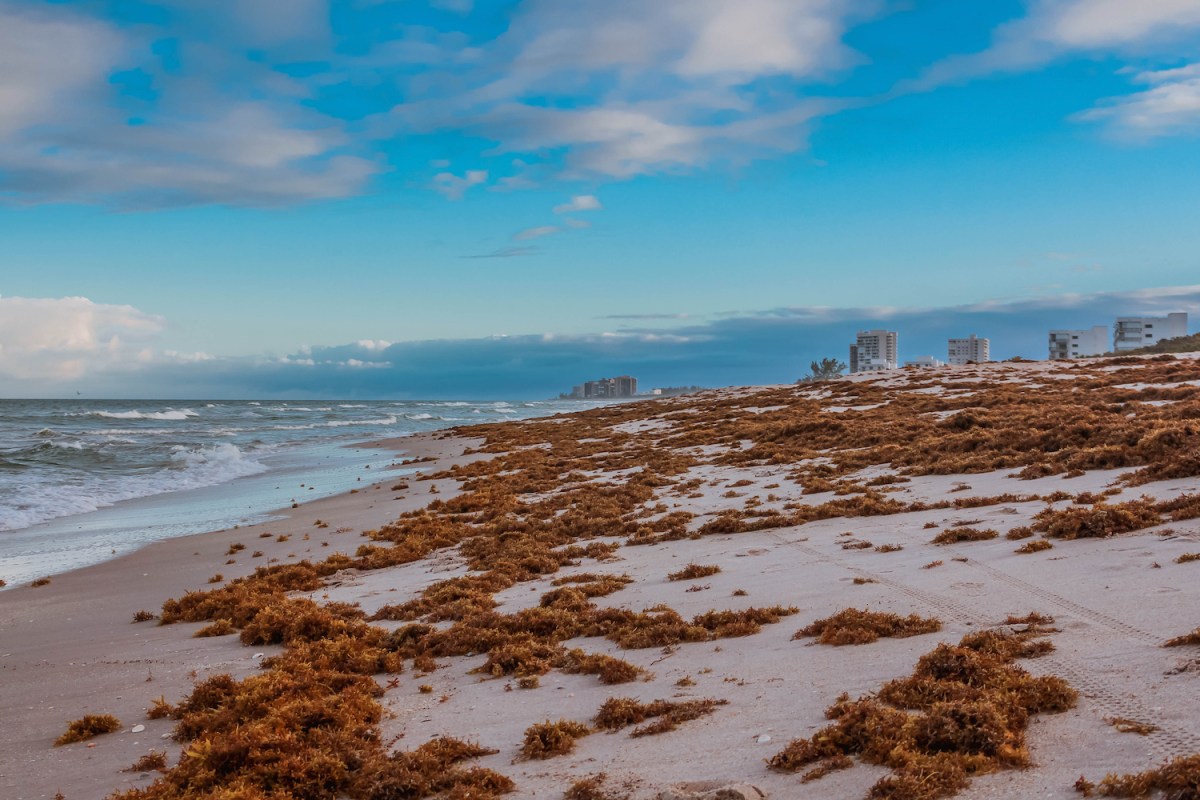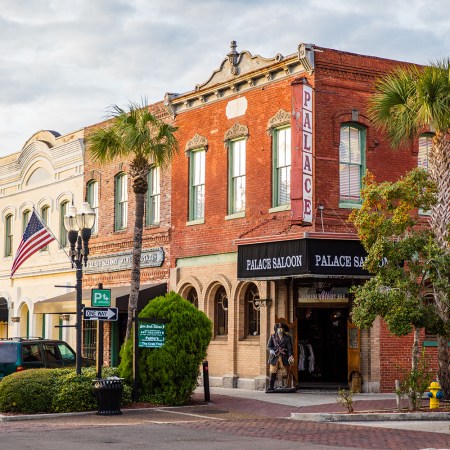Just in time for the busy summer travel season, a colossal mass of seaweed is making its way towards the Florida coast and other shorelines in the Gulf of Mexico. The variety of seaweed is called sargassum, a broad term for more than 300 species of brown algae, and it has formed these large blooms in the Atlantic for a long time, as CNN explained. But this particular bundle could be the biggest on record, extending 5,000 miles (!) from the African coast to the Gulf of Mexico.
We’ve all been to the beach and avoided the water because there’s too much seaweed floating around for comfort. But this sargassum is the mother of all masses, and it’s expected to make its slimy, smelly landfall in Florida this July, as predicted by Dr. Brian Lapointe, researcher at Florida Atlantic University’s Harbor Branch Oceanographic Institute.
“[The mass] was larger in January than it has ever been since this new region of sargassum growth began in 2011,” Lapointe told CNN. “This is an entirely new oceanographic phenomenon that is creating such a problem — really a catastrophic problem — for tourism in the Caribbean region where it piles up on beaches up to five or six feet deep.”
Winter Is Primetime for a Road Trip in Florida
From the panhandle to the keys, this is the perfect route for an off-season adventure.According to Lapointe, when a recent sargassum heap hit Barbados, the locals were using 1,600 dump trucks per day to clean up the beaches. When in the ocean, it actually serves as a habitat for fish and turtles. But when it hits the beach, it can actually become a threat to ocean life in addition to making things very gross and difficult for humans. Not only does it create barriers on the sand, but it emits a gas that smells like rotten eggs. Both the gas and the seaweed itself are toxic, so people have to be careful when cleaning up the mess.
So why is this particular sargassum blob so massive? Factors like changes in nutrients, wind, currents and rainfall can all affect the growth. And, like a lot of environmental mishaps, human activities like fossil fuel production and agriculture can cause these shifts, according to the EPA.
Researchers are looking for ways to make the sargassum monster a little more manageable, potentially by sinking it to the ocean floor or harvesting it for products like soap. But if you were planning to vacation in Florida or on the Gulf Coast this summer, you should definitely keep an eye on its progress — or perhaps wait until after hurricane season to enjoy a much cleaner beach.
Thanks for reading InsideHook. Sign up for our daily newsletter and be in the know.


















